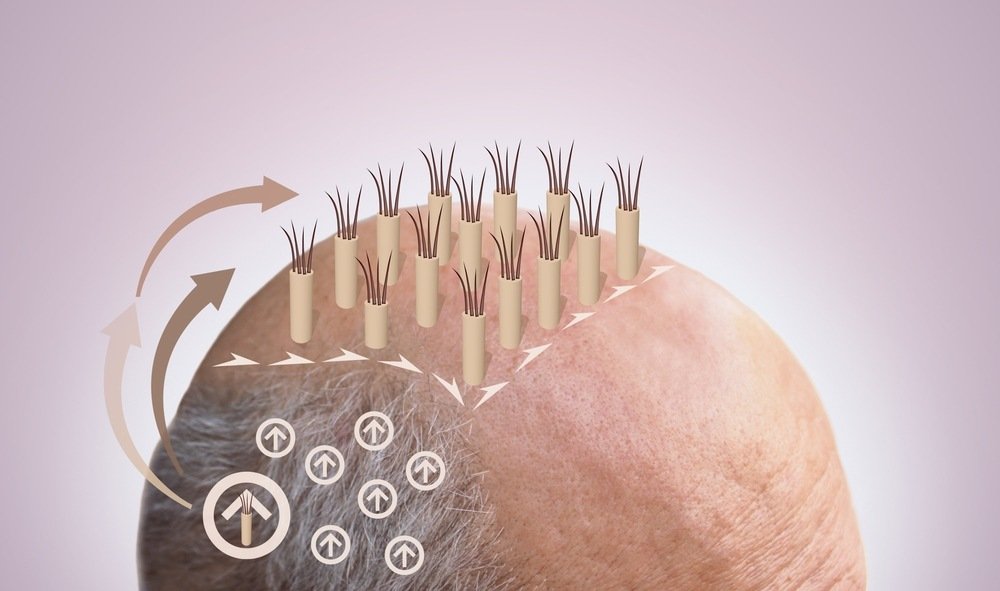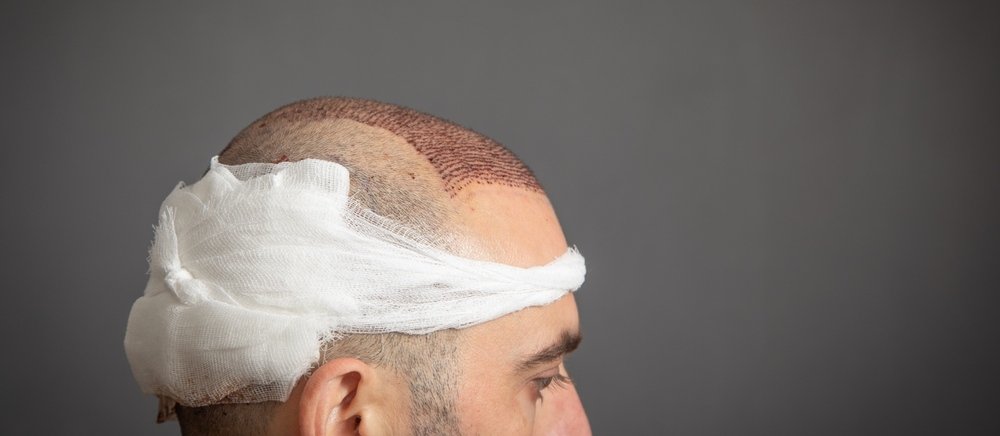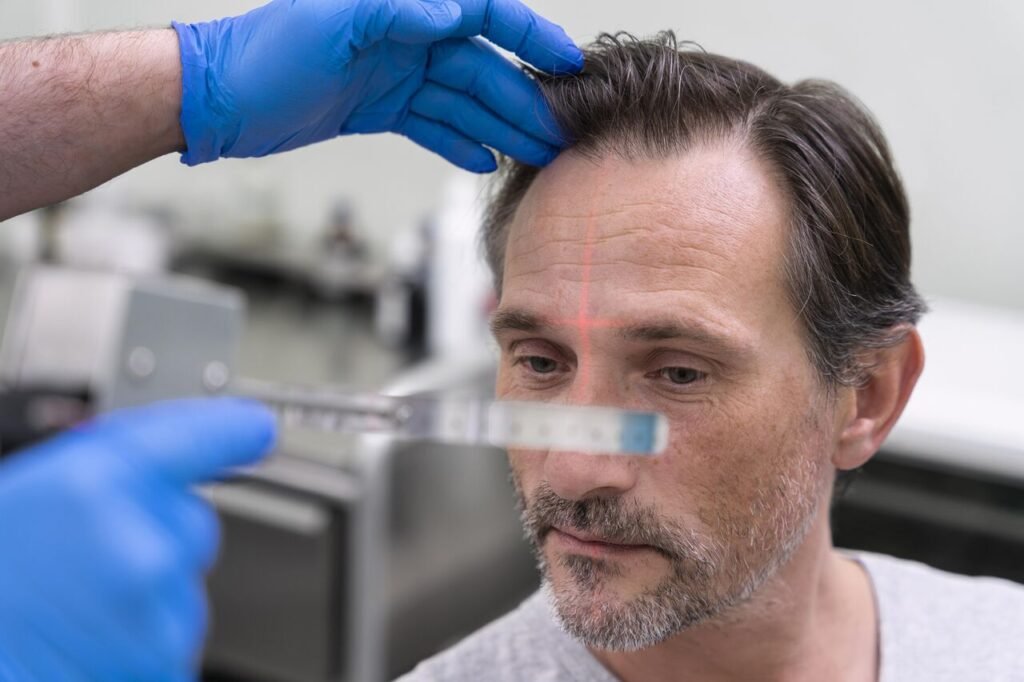A hair graft is the key building block of a hair transplant. It’s like a tiny seed that doctors use to grow new hair in areas where hair is missing. Understanding hair grafts is super important because they determine how natural and successful your hair transplant will look. This article explains hair grafts in a simple way, perfect for everyone, even kids, while diving deeper into their role in hair transplants. Let’s explore!
What Is a Hair Graft?
A hair graft is a small piece of skin that contains one or more hair follicles (the tiny roots that grow hair). During a hair transplant, a doctor takes these grafts from a part of your body with healthy hair (usually the back or sides of your head, called the donor area) and moves them to a bald or thinning spot (called the recipient area). Each graft is carefully planted to grow new hair that looks natural.
What’s Inside a Hair Graft?
A hair graft includes:
- Hair Follicles: The part that makes hair grow.
- Hair Shafts: The visible part of the hair (1–4 hairs per graft).
- Tiny Blood Vessels: These keep the follicle alive.
- Skin Tissue: A small bit of skin holds everything together.
Grafts are super tiny, about the size of a pinhead, so they fit perfectly into small holes made in the scalp.
Why Are Hair Grafts Important?
Hair grafts are the prime elements of a hair transplant because:
- They carry the hair that will grow in the bald area.
- They decide how natural the result looks. Well-placed grafts blend with your existing hair.
- Their quality affects success. Healthy grafts from a strong donor area grow better.
- The number of grafts determines how full your hair will look. More grafts mean thicker coverage.
How Are Hair Grafts Used in Hair Transplants?
Hair grafts are used in both main types of hair transplants: Follicular Unit Transplantation (FUT) and Follicular Unit Extraction (FUE). Here’s how they work in each:
1. Follicular Unit Transplantation (FUT)
- How grafts are taken: The doctor removes a strip of skin from the back of your head. This strip is cut under a microscope into tiny grafts, each with 1–4 hairs.
- Graft details: FUT grafts are often uniform because they’re carefully divided by a team. This method can produce many grafts (2,000–4,000) in one session.
- Best for: People needing a lot of hair to cover large bald areas.
2. Follicular Unit Extraction (FUE)
- How grafts are taken: The doctor uses a small tool to pluck individual grafts directly from the donor area, one by one. No strip is removed.
- Graft details: FUE grafts are taken randomly, so they’re very natural-looking. Sessions typically involve 1,000–3,000 grafts, depending on the area.
- Best for: People who want smaller scars or prefer shorter recovery time.
Other Methods
- Direct Hair Implantation (DHI): A type of FUE where grafts are planted using a special pen-like tool for more precision.
- Robotic FUE: Machines like the ARTAS system help doctors extract grafts faster and with accuracy, but a human doctor still plans and places them.
How Many Grafts Do You Need?
The number of grafts depends on:
- Size of the bald area: A small receding hairline might need 500–1,500 grafts. A fully bald crown could need 3,000–5,000.
- Hair type: Curly or thick hair covers more with fewer grafts. Straight or thin hair needs more.
- Desired thickness: If you want very dense hair, you’ll need more grafts.
- Donor area strength: You can only take as many grafts as your donor area allows (usually 6,000–8,000 total in a lifetime).
Example:
- Receding hairline: 1,000–2,000 grafts
- Thinning crown: 2,000–3,000 grafts
- Full top coverage: 4,000–6,000 grafts
Your doctor will count grafts during a consultation to make a plan.
The Process of Working with Hair Grafts
Here’s how grafts are handled during a hair transplant, step by step:
- Donor Area Prep: The doctor shaves and cleans the back of your head where grafts will come from.
- Graft Extraction:
- FUT: A strip of skin is removed, and technicians cut it into grafts under a microscope.
- FUE: Individual grafts are taken with a tiny punch tool (0.8–1.0 mm wide).
- Graft Storage: Grafts are kept in a special solution to stay healthy until they’re planted.
- Recipient Area Prep: The doctor makes tiny holes in the bald area, planning the angle and direction to match your natural hair.
- Graft Placement: The doctor or team carefully places each graft into the holes. This step is like planting seeds in a garden.
- Healing: Grafts settle in over a few days. The hair falls out after 2–4 weeks (normal!), then new hair grows in 6–12 months.
Why Graft Quality Matters
Not all grafts are the same. Here’s why quality is key:
- Healthy Follicles: Grafts from strong donor areas (back or sides) are resistant to balding and grow better.
- Careful Handling: Grafts are delicate. If they’re damaged during extraction or placement, they might not grow.
- Proper Storage: Grafts need to stay moist and cool outside the body. Good clinics use special solutions to protect them.
- Skillful Placement: Doctors place grafts at the right depth and angle so hair grows naturally, matching your hair’s pattern.
Poor-quality grafts or bad handling can lead to low growth rates (only 50–70% of grafts surviving) or unnatural results.
Good Side of Hair Grafts
- Natural Results: Well-placed grafts look like your own hair.
- Permanent: Grafts from the donor area are usually resistant to balding, so they last a lifetime.
- Flexible: Grafts can be used to fix hairlines, crowns, or even eyebrows and beards.
- Customizable: Doctors choose grafts with 1, 2, 3, or 4 hairs to create the perfect look (single-hair grafts for hairlines, multi-hair grafts for density).
Bad Side of Hair Grafts
- Limited Supply: You only have so many grafts (6,000–8,000) in your donor area. Once they’re used, you can’t get more.
- Time-Consuming: Extracting and placing thousands of grafts can take 4–8 hours.
- Risk of Failure: If grafts are mishandled or the scalp isn’t healthy, some may not grow (10–20% loss is normal).
- Scarring: FUE leaves tiny dot scars; FUT leaves a linear scar. Both are usually hidden by hair but can be visible if you shave your head.
Before and After Hair Grafts
- Before: Bald spots or thin hair make you feel shy. The donor area (back of head) is full of healthy hair.
- After: Bald areas fill in with new hair. In 6–12 months, you see thick, natural growth. The donor area heals, with minimal scarring (especially in FUE). Photos show a big change, like a new, confident you!
Common Questions About Hair Grafts
People search for these questions online:
- “What is a hair graft?” A small piece of skin with hair follicles moved to a bald area.
- “How many grafts do I need?” Depends on the bald area size and hair type—usually 1,000–5,000.
- “Do grafts always grow?” Most do (80–90%), but some may fail if mishandled or if your scalp isn’t healthy.
- “Can grafts be taken from other people?” No, your body would reject them. Only your own grafts work.
- “How long do grafts last?” Forever, because donor hair is resistant to balding.
- “Can grafts be reused?” No, once a graft is taken and planted, it can’t be moved again.
Search Trends
People also look for:
- “Hair graft cost” (usually $3–$8 per graft)
- “Hair graft survival rate”
- “FUE graft extraction process”
- “Hair graft before and after photos”
- “Best clinics for hair grafts”
Why Hair Grafts Matter
Hair grafts are the heart of a hair transplant. They solve hair loss by moving your healthy hair to where it’s needed. This matters because:
- Confidence: Full hair helps you feel great about yourself.
- Long-Term Fix: Unlike wigs or medicines, grafts are a permanent solution.
- Natural Look: Skilled doctors use grafts to match your hair perfectly.
But it’s a big decision. Poor graft quality or bad technique can lead to scars or patchy results, so it’s crucial to choose an experienced dermatologist or plastic surgeon.
Fun Fact
A single hair graft with multiple grafts can grow up to 2–4 hairs, so one tiny graft can make a big difference in how thick your hair looks!
Final Thoughts
Hair grafts are like magic seeds for growing new hair. They’re the most important part of a hair transplant, turning bald spots into full, natural hair. Whether you choose FUT or FUE, the success depends on healthy grafts and a skilled doctor. If you’re thinking about a hair transplant, talk to a trusted dermatologist or plastic surgeon to learn how grafts can help you confidently shine!
Want to know more? Search for “hair transplant clinics near me” or visit ishrs.org to find a pro who knows all about grafts!



